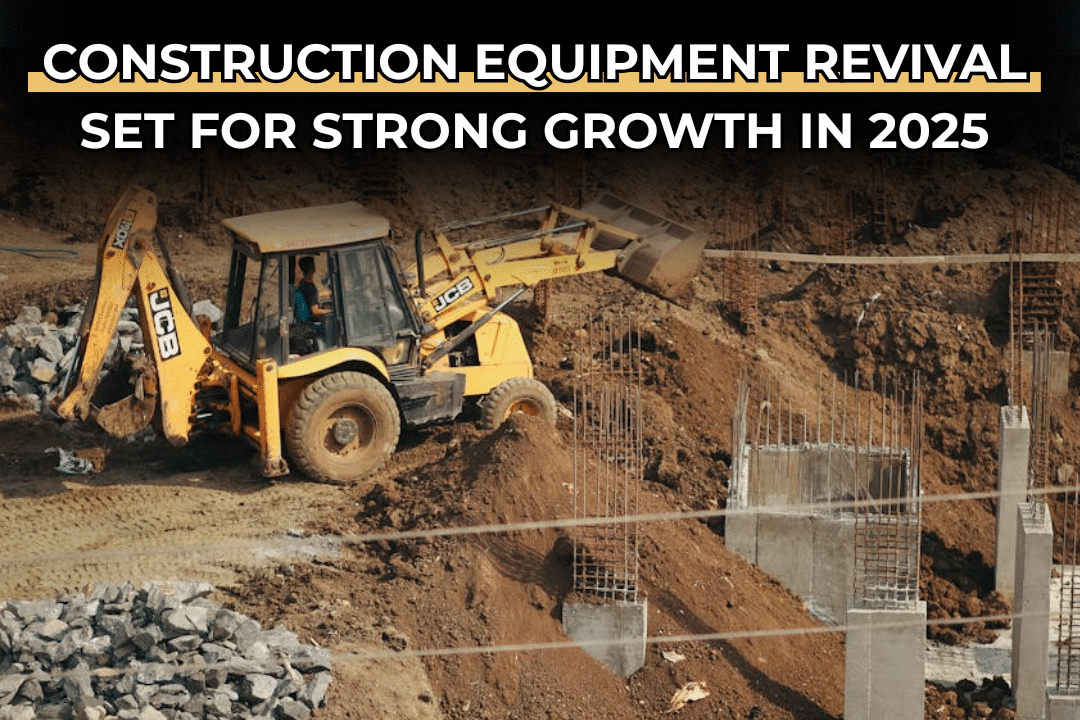India’s construction equipment industry showcased a steady growth in 2024-2025. The sales figures improved 3% from previous year, reaching 140,191 units. Export demand increased by 10%. Domestic growth remained limited, mainly due to election delays and regulatory shifts. Still, the market stayed stable. And now, the outlook for 2025–26 appears stronger.
Exports led the gains. Of the 13,230 units exported, 88% went to non-SAARC countries. Domestic sales grew 2.7%. Western India drove 35% of this demand. March 2025 showed strong activity. Sales touched 14,739 units, up 15% month over month. Procurement surged at year-end. Yet, pressure remained.
Manufacturers faced several challenges such as higher steel costs, payments delyas and tight financing. Segment-wise, earthmoving equipment led with 71% of total sales. Backhoe loaders and crawler excavators formed 90% of this group. Backhoe loader sales reached 53,133 units. Crawler excavators followed with 35,816. Demand rose both at home and abroad.
Concrete equipment saw 3% growth. Mixers led, with 8,577 units sold. Exports more than doubled, rising to 689 units. This reflected stronger global demand for Indian concrete machinery.
Material handling equipment fell 9%. Pick-and-carry cranes dropped 7%. Telehandlers declined sharply, down 37%. Road equipment rose 3%. Though domestic demand fell, export growth of 136% supported the segment. Soil compactors and rollers led the rebound. Material processing dropped 4% due to weak orders and falling exports.
Equipment-as-a-Service (EaaS) is gaining ground. It offers cost control and flexible access. Firms like Volvo CE are pushing the model. Buyers now prefer usage-based solutions over full ownership.

Automation is entering highways. The AIMC initiative launched GPS-based graders and smart compactors. These tools improved quality and speed on projects like the Lucknow-Kanpur Expressway.
Electric machines are rising. Volvo’s EC400 and EC500 hybrids cut CO₂ by 15% and boost fuel savings by 17%. JCB’s 19C-1E is also seeing demand in cities. With better batteries and new chargers, electric CE adoption is growing.
In 2025, CEV-V norms will take effect. Costs will rise 12–15% for most machines. Smaller engines will see less impact. But larger ones need new systems like diesel filters and catalytic reduction. This will affect pricing but align India’s standards with Europe and North America. That change could boost exports long term.
Public policy is driving demand. The Union Budget allocated ₹12 trillion for infrastructure. Roads, metros, rail, and urban transit will benefit. These projects will need new equipment across all categories.
Make in India and PLI schemes are also helping. They support local manufacturing and reduce imports. That will ease supply chain gaps and cut costs. Sustainable construction equipment is part of this push.
ICEMA expects the CE market to grow from $10 billion now to $11 billion in 2025–26. Over time, it may reach ₹990 billion by 2030. Electric construction machines could hold 10–15% of this total. Global growth in this segment is set to exceed 38% CAGR.
India’s construction tech adoption is growing. The country is adapting fast. With strong exports, new infrastructure, and cleaner machines, the market is preparing for a solid revival.
Stay tuned with 91Infra for the latest news, updates, and insights into the construction equipment industry. As the fastest-growing digital platform, we are committed to providing you with accurate information, expert reviews, and in-depth analysis of construction equipment from various brands. Whether you’re looking for price comparisons, variant details, or industry trends, 91Infra is your go-to source for everything related to construction machinery in India.










